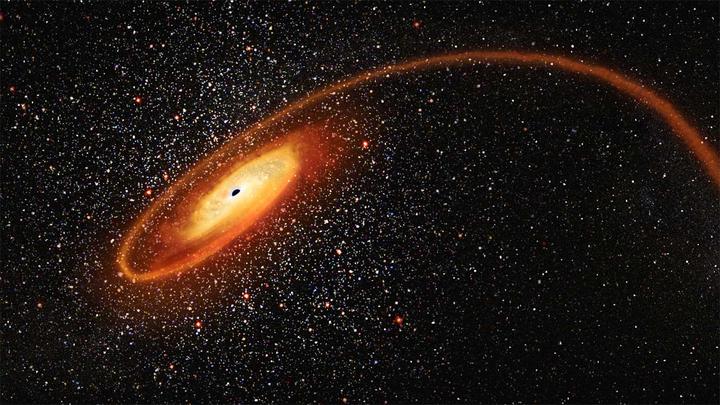TDE Accretion Disks
 NASA/ESA/D. Player (STScI)
NASA/ESA/D. Player (STScI)
The accretion disks in TDEs are elusive to study. Following a TDE, the X-ray emission from the newly-formed disk is often reprocessed into lower energies (i.e. UV and optical), where the disk is not the sole contributor. Fortunately we may have ways to differentiate light produced in the disk from other processes.
It has been predicted that a spectral line that forms in a rotating disk will have a double-peaked line profile, where the Doppler shifted peaks correspond to the portion of the disk that is moving toward and away from the observer. The size, eccentricity and inclination angle of the disk determines the asymmetries in the observed line shape.
In Hung et al. (2020), I reported the first unambiguous detection of a resolved double-peaked hydrogen Balmer emission in a TDE. The Hα line profile in AT2018hyz can be well-described by an accretion disk and a Gaussian component from non-disk clouds. I used MCMC to constrain the disk geometry and this non-disk component simultaneously. The result suggests the presence of a low eccentricity (e=0.1) accretion disk extending out to a distance that is 100x farther away from the original site of the TDE, or 0.1% light year. This disk makes up <5% of the mass of the disrupted star. Producing such an extended thin disk in nearly two months requires efficient angular momentum transportation, which may be acheived through shocks or advections by winds. See links at the top for the press release and featured articles of this event.
